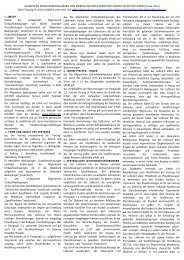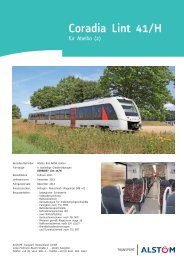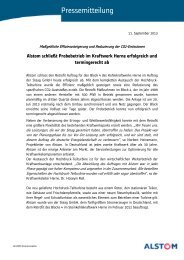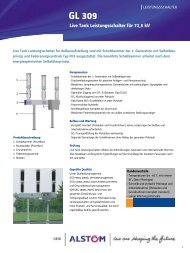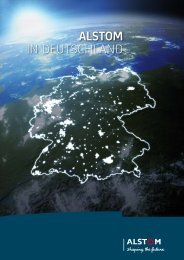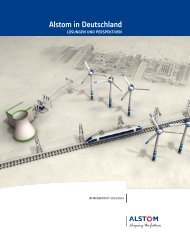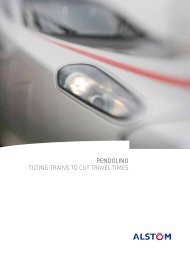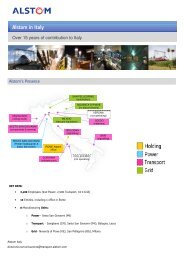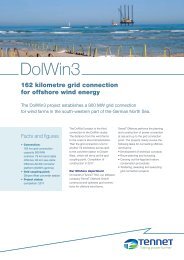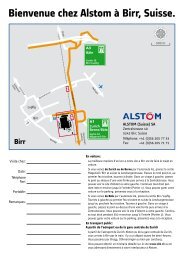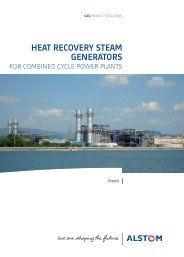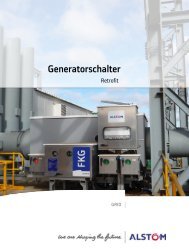MOROCCO IS ACCELERATING! feature - Alstom
MOROCCO IS ACCELERATING! feature - Alstom
MOROCCO IS ACCELERATING! feature - Alstom
Create successful ePaper yourself
Turn your PDF publications into a flip-book with our unique Google optimized e-Paper software.
Fabienne Keller,<br />
Senator for the Bas-Rhin.<br />
1979: École polytechnique.<br />
1979: Corvette Captain French<br />
Navy Reserve.<br />
1984: École nationale du génie<br />
rural, des eaux et des forêts.<br />
1985: Master of Arts in Economics<br />
(Berkeley).<br />
1985: Responsible for managing<br />
the French cereal market<br />
at the Ministry of Agriculture.<br />
1988: Responsible for fi nance<br />
for the agriculture and fi shing sector<br />
of the Treasury Department<br />
of the Ministry of Finance.<br />
1989: Managing Director<br />
Crédit Industriel d’Alsace-Lorraine.<br />
1996: Managing Director<br />
Crédit Commercial de France.<br />
2001: Mayor of Strasbourg<br />
and President Deligate of<br />
the Communauté urbaine<br />
de Strasbourg.<br />
2005: Senator for the Bas-Rhin.<br />
Some two billion passengers come and go<br />
each year in the 3,000 stations of the French<br />
network (ref. box page 30). A fi gure that<br />
is even higher if one includes non-travellers,<br />
but a fi gure that is diffi cult to ascertain<br />
for the entire country. Measurements carried<br />
out at Lyon Part-Dieu, for example, show<br />
that 40% of the people in the station are not<br />
there to take a train. For Fabienne Keller,<br />
this station, located in the heart of<br />
a business district, is also a stopping-off<br />
place for shopping and services.<br />
Stations – and in particular major stations –<br />
are more than just rail centres:<br />
“The notion of a ‘major station’ does not<br />
refer to the station’s size but above all<br />
to the meeting, in addition to rail, of different<br />
modes of transport. The major station<br />
therefore always combines intermodality<br />
and a service offer that aims to make<br />
waiting time both agreeable and productive.”<br />
In a station such as Strasbourg, a town<br />
where Fabienne Keller was the Mayor<br />
for a long time, we therefore<br />
fi nd very high-speed, mainline and regional<br />
line rail transportation, plus regional<br />
and intercommunal transport by bus,<br />
tramway or metro, and not forgetting bicycles,<br />
less encumbering than cars. “Lastly,”<br />
she recalls, “we also fi nd people on foot,<br />
who are often forgotten in stations. In fact,<br />
the main priority in developing stations<br />
should be the person with reduced mobility,<br />
the person on foot with their luggage,<br />
gentle modes of transport, such as bicycles,<br />
then collective, urban and interurban modes,<br />
taxis, car sharing, carpooling and, last of all,<br />
the individual car occupant who leaves,<br />
when he parks at a station, a 16 m 2 mark.<br />
This order of priorities should dictate<br />
distances to the major station’s platforms:<br />
bicycle ranks are placed nearest,<br />
then short-term parking and car sharing,<br />
taxis, with collective access very close<br />
and then, further away, parking space<br />
for individual parking.” �<br />
29



